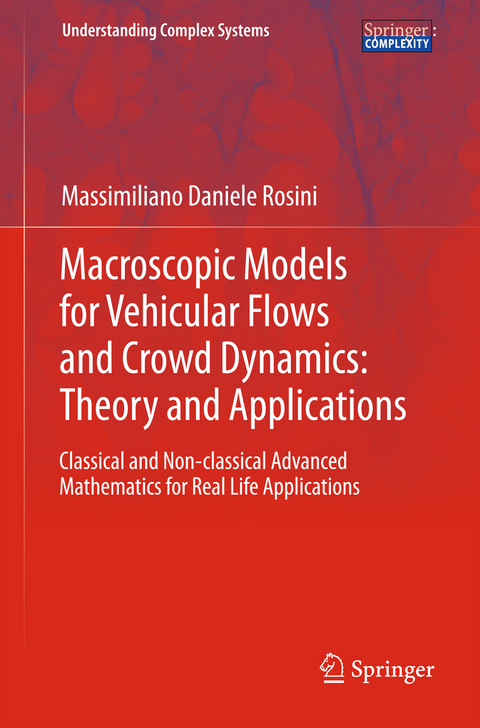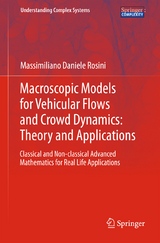Macroscopic Models for Vehicular Flows and Crowd Dynamics: Theory and Applications
Classical and Non–Classical Advanced Mathematics for Real Life Applications
Seiten
2013
|
2013
Springer International Publishing (Verlag)
978-3-319-00154-8 (ISBN)
Springer International Publishing (Verlag)
978-3-319-00154-8 (ISBN)
This book offers a systematic treatment of the theory for hyperbolic conservation laws and their applications to vehicular traffic and crowd dynamics. Presents important new techniques, including the wave front tracking algorithm and many examples and figures.
This monograph presents a systematic treatment of the theory for hyperbolic conservation laws and their applications to vehicular traffics and crowd dynamics. In the first part of the book, the author presents very basic considerations and gradually introduces the mathematical tools necessary to describe and understand the mathematical models developed in the following parts focusing on vehicular and pedestrian traffic. The book is a self-contained valuable resource for advanced courses in mathematical modeling, physics and civil engineering. A number of examples and figures facilitate a better understanding of the underlying concepts and motivations for the students. Important new techniques are presented, in particular the wave front tracking algorithm, the operator splitting approach, the non-classical theory of conservation laws and the constrained problems. This book is the first to present a comprehensive account of these fundamental new mathematical advances.
This monograph presents a systematic treatment of the theory for hyperbolic conservation laws and their applications to vehicular traffics and crowd dynamics. In the first part of the book, the author presents very basic considerations and gradually introduces the mathematical tools necessary to describe and understand the mathematical models developed in the following parts focusing on vehicular and pedestrian traffic. The book is a self-contained valuable resource for advanced courses in mathematical modeling, physics and civil engineering. A number of examples and figures facilitate a better understanding of the underlying concepts and motivations for the students. Important new techniques are presented, in particular the wave front tracking algorithm, the operator splitting approach, the non-classical theory of conservation laws and the constrained problems. This book is the first to present a comprehensive account of these fundamental new mathematical advances.
Part I Mathematical Theory.- Part II Models for Vehicular Traffic.- Part III Models for Pedestrian Traffic.
| Erscheint lt. Verlag | 31.5.2013 |
|---|---|
| Reihe/Serie | Understanding Complex Systems |
| Zusatzinfo | XII, 242 p. |
| Verlagsort | Cham |
| Sprache | englisch |
| Maße | 155 x 235 mm |
| Gewicht | 549 g |
| Themenwelt | Mathematik / Informatik ► Informatik ► Theorie / Studium |
| Mathematik / Informatik ► Mathematik ► Angewandte Mathematik | |
| Naturwissenschaften ► Physik / Astronomie ► Astronomie / Astrophysik | |
| Naturwissenschaften ► Physik / Astronomie ► Mechanik | |
| Naturwissenschaften ► Physik / Astronomie ► Optik | |
| Technik | |
| Schlagworte | Air Shower • Atmospheric Muons and Neutrinos • Complexity • Cosmic accelerators • cosmic rays • Diffusive Shock Mechanism • Gamma Astrophysics • Neutrino Astronomy • Neutrino Astrophysics • particle astrophysics • Particle Shower • solar neutrinos |
| ISBN-10 | 3-319-00154-X / 331900154X |
| ISBN-13 | 978-3-319-00154-8 / 9783319001548 |
| Zustand | Neuware |
| Haben Sie eine Frage zum Produkt? |
Mehr entdecken
aus dem Bereich
aus dem Bereich
was jeder über Informatik wissen sollte
Buch | Softcover (2024)
Springer Vieweg (Verlag)
37,99 €
Grundlagen – Anwendungen – Perspektiven
Buch | Softcover (2022)
Springer Vieweg (Verlag)
34,99 €
Eine Einführung in die Systemtheorie
Buch | Softcover (2022)
UTB (Verlag)
25,00 €




